Tips for Taking Indoor Succulents Outside for the Summer
Succulents grown outdoors often seem to be healthier and prettier than those grown indoors, unless you are using grow lights. The two biggest reasons for this are more sunlight (which prevents stretching) and better airflow (allowing the roots to dry out more quickly).
If you are not using grow lights for your succulents (and potentially even if you are), I highly recommend taking your indoor succulents outside for the summer, at least for a little while.
Succulents and Sunshine is reader supported. We may earn a commission, if you purchase through links on our site, such as Mountain Crest Gardens, Amazon, or Etsy. We only promote products we use and trust.
As you do so, however, there are a few things to keep in mind to prevent the transition from damaging or even killing your succulents.
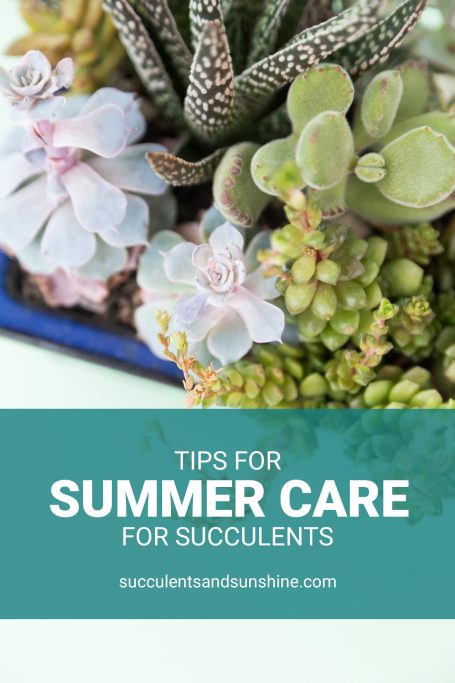
When to move succulents outside for the summer
Most succulents can tolerate a night or two of freezing temperatures, but it's best to move your succulents outside after the last frost. The change in temperature from your home, likely around 70°F, to a cold outdoor climate can be shocking to your succulents.
It's best to move them out once the weather is more similar to your indoor climate. Naturally there will be more fluctuation in temperature outside, but ideally your succulents won't be in temperatures below 40°F or above 80°F when you first move them out.
For most areas with a 4 season climate, this will mean your succulents start transitioning outside in early to mid-May.
Ease them into the sunlight
The amount of light outdoors is significantly higher (even in the shade) than inside. It's very easy for your succulents to burn from too much sunlight or too much heat. Start your succulents in an area that gets full shade and gradually move them into an area with more sunlight.
Succulents that are larger and have a more established root system will tolerate more light more easily. On the other hand, newly planted succulents may need to be kept in the shade longer.
Try adding an hour or two of sunlight each week and avoiding direct sunlight in the afternoon. Morning sunlight is cooler and best for succulents. Direct sunlight in the late afternoon, if the temperature is over 85°F, will be stressful for succulents used to being indoors.
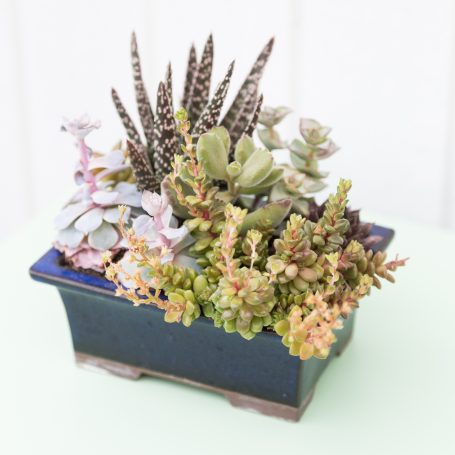
The pattern of direct light changes throughout the year as the sun is higher or lower in the sky. Pay attention to the area you're planning to place your succulents. Ensure there is shade in the afternoon and watch it throughout the summer to see if you need to make any adjustments.
One year, I burned a bunch of plants when I moved mine outside. I have a wire rack on the east side of my house where I generally keep my succulents. The roof hangs over the rack so I assumed it was shaded most of the day.
While I knew it got some morning sun, I didn't realize it got full, direct sunlight until about 1:00 PM. This was way too much sun for most of my plants, especially my leaf propagation.
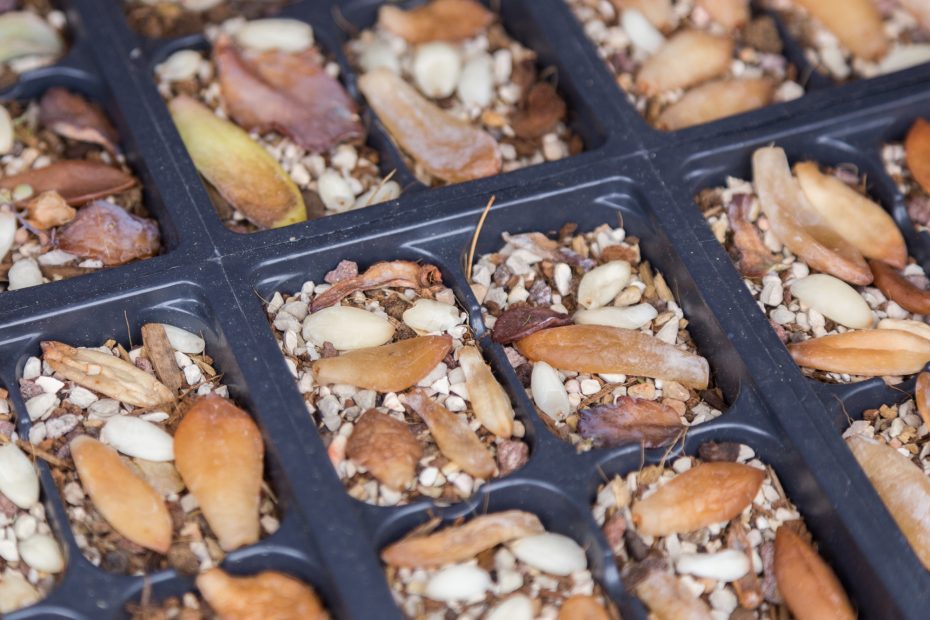
With your own succulents, watch for early signs of sunburn such as bleaching or color changes. It's normal for succulents to change colors throughout the year, especially if they're getting plenty of sunlight. However, sudden color changes, especially yellow/brown/golden, are typically signs of sunburn. If you see these signs, move your succulents back to an area with more shade.
Fertilize
Spring is a great time to fertilize succulents. Most are coming out of dormancy and are ready to grow. A little food will help them regain their color and produce healthy new offshoots!
If you choose to use commercial fertilizer, make sure you dilute it quite a bit. Too much fertilizer can easily burn succulents.
My personal preference for fertilizing is to use worm castings. Not only do they add essential nutrients to the soil, but they also create a healthy little ecosystem that allows the plants to use those nutrients more easily. A sprinkle of worm castings on top of the soil will benefit your succulents without the risk of burning or over-fertilizing them.
Use Pot Feet
Rather than placing your pots directly on the ground, make sure to use pot feet or place them on something like a wire rack or plant stand to allow for water drainage and airflow.
While succulents love the rain and a good soak with the hose, soil that stays wet too long can cause problems. Without pot feet, water is more likely to pool at the bottom of your succulent container and cause the roots to rot.
If you want to dive in a bit deeper, I have a whole article on why using pot feet for succulent pots is beneficial.
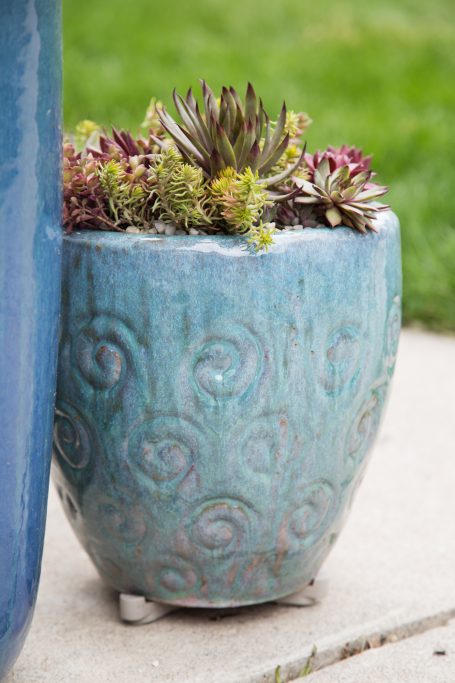
Prune and Propagate
It's quite likely your succulents have really stretched out over the winter. Colorful succulents such as Echeverias seem to get especially stretched out, while greener succulents like Haworthiopsis tend to keep their shape better.
Once your succulents have adjusted to their new home outside and you see nice, compact growth, pruning your succulents is a great option. Not only will your plant produce new offsets, but you can also plant the cutting. More succulents for free!
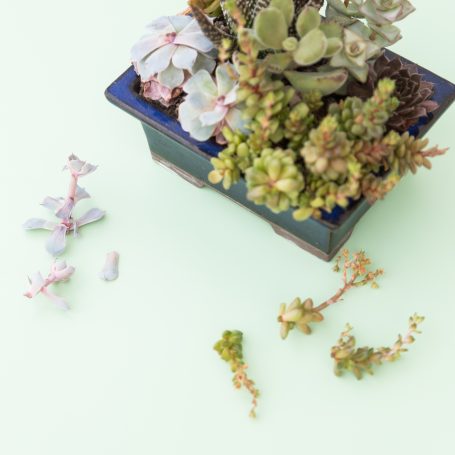
Repot if necessary
If your succulent grew much larger over the winter or if some plants sharing the same pot died, you'll likely want to repot them. Dump out the old soil and remove as much of it as you can from the roots. Clean out the pots with soapy water (then rinse out) or spray with isopropyl alcohol, and replant your succulents with fresh new soil!
If your succulents have been growing in the same pot for a while, they'll also appreciate the new soil and clean home. It's always nice to have freshly potted succulents for the summer.
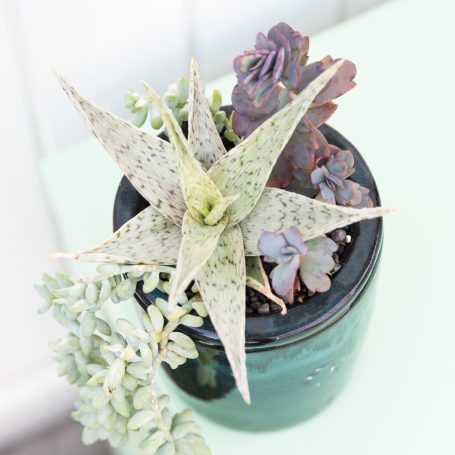
Watch for bugs
Mealybugs love quickly growing plants. After you move your plants, watch out for these nasty pests. Ants are attracted to and eat mealy bugs. If you see ants near your plants, there's a good chance you have mealy bugs too.
You can treat your succulents for mealy bugs by spraying them with isopropyl alcohol or a mite spray. Be sure to completely cover your succulent as these pests like to hide between the leaves. It's also a good idea to move your succulent out of direct sunlight after treating for pests to prevent sunburn.
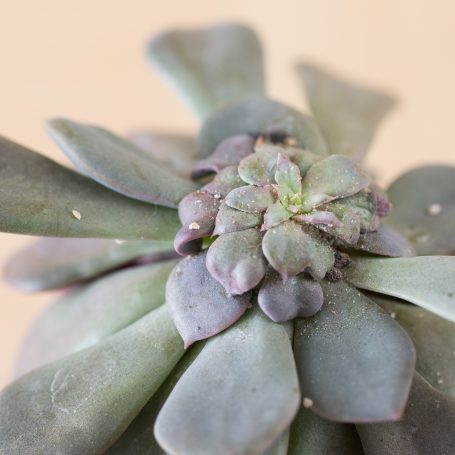
You may also notice other critters start to find your plants. Snails and slugs love succulents and will completely destroy them if given the chance. Squirrels, raccoons, birds, dogs and cats seem to enjoy playing with succulents as well. The bigger animals can be hard to deter and may force you to bring your plants back in.
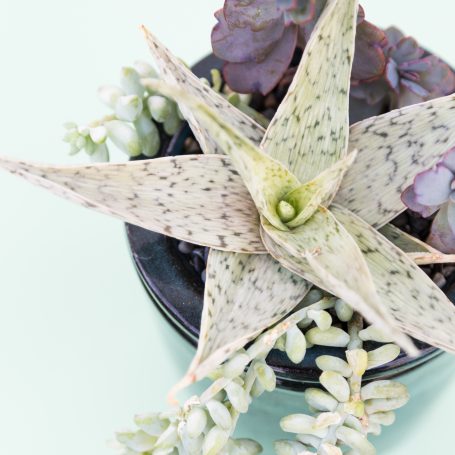
When you are bringing your plants out for the summer, keep these things in mind. I can tell you from experience that it's sad and frustrating to kill plants because you have not paid attention to their needs.
Your plants will benefit from the fresh air and a little more sunlight, so it's worth moving them out!
Be sure to keep them out of full sun for a while, fertilize, propagate, repot if necessary and watch out for bugs and pests!